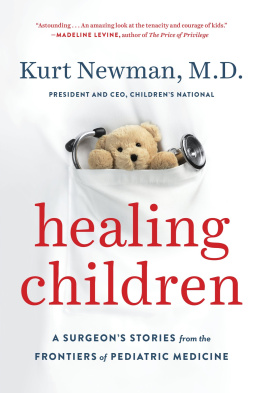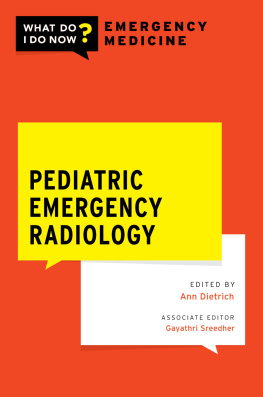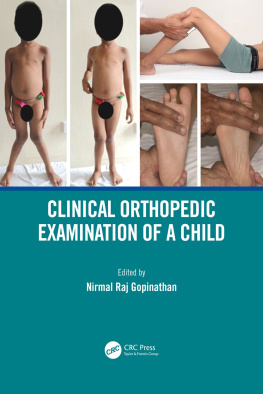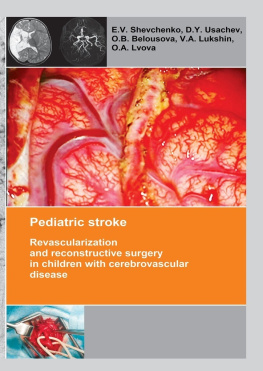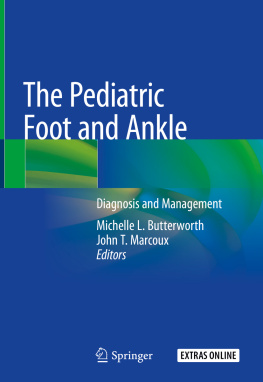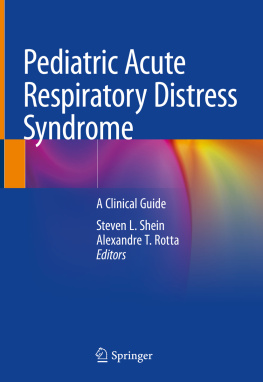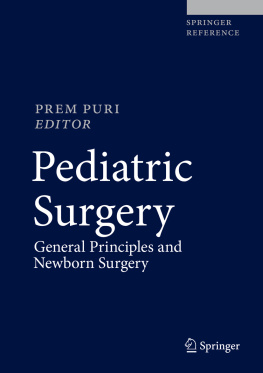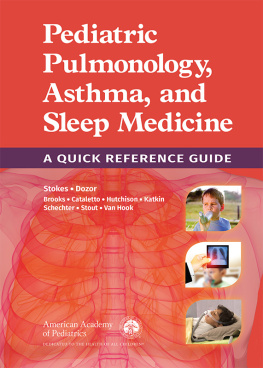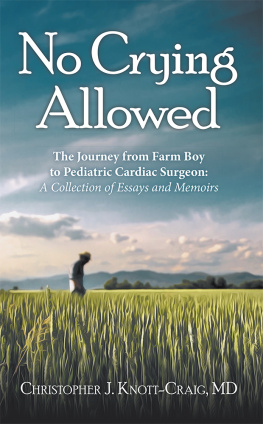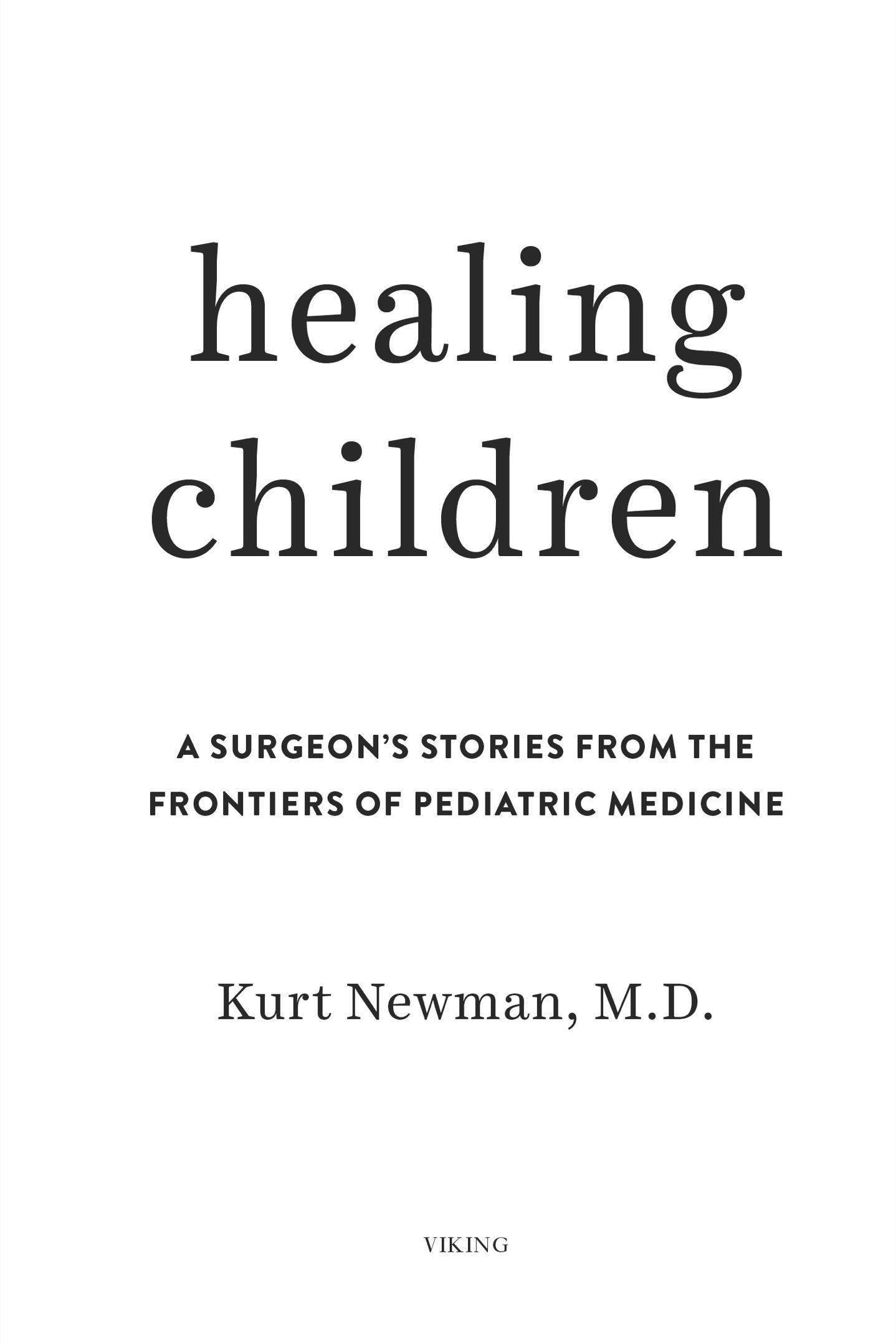The stories in this book are real. They are the stories of children, families, doctors, and nurses, most of whom have come through the doors of Childrens National, and meaningfully touched the lives of those who have worked with them. In some cases, I have changed the names or certain identifying details of patients to protect their privacy; in others, all details are unchanged. In one instance, I created a composite character as it seemed to me the only way to fully protect the patients identity. A desire to help other children and their parents was universally expressed by the families whose stories I have told.
Introduction
Forty years ago I was in my third year at Duke University School of Medicine, working for a future Nobel Prize winner and doing research on receptor molecules in his cardiology lab. I had just drawn a blood sample from an older man at the hospital and taken it back to the lab. I thought I was on to somethingusing hormones to improve the absorption rates of medication by the bodys tissuesand Dr. Robert Lefkowitz, my boss, was pleased with my ideas and results.
I was crouched over the microscope, shifting to analyze the slide, when I reached up and rubbed a spot right below my Adams apple and found a lump in my neck. I prodded the spot again. I felt a bulging mass, and deep down I knew, though the odds should be in my favor, that I had cancer.
Being a cancer patient at your own medical school is an awkward experience. After a series of tests, Dr. William Peete, a gentlemanly surgeon whose work I had observed during my second year, told me I needed surgery. He was fairly certain Id be fine, but abruptly Id found my world turned upside down.
The night of the surgery I checked into the hospital and was so claustrophobic and anxious I could hardly stay put. I managed to persuade the resident, a former classmate, to let me sneak out to play in an intramural basketball game and Cinderella it back by midnight. I stuffed my sneakers and shorts into a backpack and rushed over to the gym, missing warm-ups but taking my regular spot on the bench just as the game began. I played for about two minutes toward the end of the first half, but I was so nervous, I drew a charge call the only time I touched the ball. In the end we lost, and I returned, dejected and even more anxious than before.
I barely slept that night and was sitting straight up the next morning when the orderlies came in to wheel me to the ORpast several of my classmates, who tried to high-five me. One wisecracked about the game the night before. In the OR, to my horror, I realized that the surgical nurse leaning over me was a classmates girlfriend. Here I was, naked, with Byrons girlfriend looking down into my eyesthat was my last thought before the anesthesia knocked me out.
During those hours and over the coming days, I resolved to become a surgeon. The experience of being fixed and cured by someone elses hands led me immediately to want to cure and fix with my own hands. I still remember what Dr. Peete did in my pre-op exam. He stood in front of me, pulled down his collar, and showed me a scar. Hed had thyroid cancer as a young man, too!
Having experienced surgery while working in a cutting-edge research lab, I began to think that my dream job would combine surgical intervention with scientific investigation. Surgery and science: the present and the future, the hands and the brain. I did not yet realize that this trajectory would entail working with children, but watching a young girl emerge from anesthesia in the recovery room was the first propulsive experience on that path.
I spotted her as I dipped in and out of consciousness, machines beeping, doctors and nurses bustling in the aisle between us. She had short black hair, almost a bowl cut, and must have been around eight years old. Slowly shaking off the anesthesia, I began to register how out of place she was, peering nervously at the machines and all the big people lying on gurneys around her. There wasnt another child in sight. A couple of classmates popped in and started swabbing my mouth with a wet cloth. It felt so dry, I thought my tongue was stuck to my teeth. I wanted to tell them to do the same thing for the girl, but my throat hurt so much, I couldnt get the words out.
Finally one of my friends wandered over and touched her on the shoulder. I felt so relievedhere I was with two buddies boosting my spirits, while she was alone and scared. Even then, long before I could have any role in encouraging policy change to allow parents into recovery rooms, I sensed how wrong it was for this child to be recovering on her own. It wasnt Dukes faultthere probably wasnt a children-only recovery room at any general hospital in the United States at the timebut the image of that girl alone, and the thought of her parents alone somewhere else, stayed with me until I was in a position to do something about it.
In my early years at Childrens National, clowns were regular features in the hospital, but an uptight surgeon complained that the clowns had frightened one of his patients, and the administration decided to banish them from the recovery room. Restoring the visitation program was one of my first acts when I became the chief of surgery in 2004. In the intervening years, I treated thousands of children, operated on hundreds, and was regularly amazed by their psychological resilience and bounce-back biology. Kids are genetically programmed to recover from devastating accidents and debilitating conditions. Their biological impulse is to thrive, even in the face of the most daunting conditions.
During my twenty-five years as a pediatric surgeon, I slowly came to grips with the daily risks that children, and their parents, face. Not even a trauma doctor can predict or imagine what trouble a kid will get into. Ive extracted a toy soldier from a trachea, an inch-long fish bone from an esophagus, and a shard of an old gym bleacher from a boys backside. Ive helped address terrible burns from ramen noodle spills and tissue damage from snakebites.
Children are made to heal, but they need a medical environment dedicated to creating the conditions in which they can do so. They need, and deserve, more than clowns and child-only recovery rooms. They need specialty centers with doctors, nurses, psychologists, social workers, orderlies, administrators, and maintenance staff devoted to fostering an environment attuned to their unique psychology, biology, and medical conditions. But childrens hospitals have struggled to gain a foothold in the lucrative world of American medicine. Adult diseases win more investment; adult doctors are better paid; adult medicine dominates the news cycle. As a society, we prioritize end-of-life and palliative care, while childrens medicine is painfully undervalued and underfunded. In the United States there are 35 independent childrens hospitals and more than 200 operating as part of a larger integrated health system, but nearly 5,000 hospitals focused primarily on adult care. This in a country with 75 million children under the age of eighteen. My hope is that by the time you finish reading

